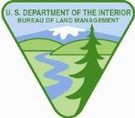Tehama Roads & Trails 2015 - Passport in Time
Main menu:
Current Projects > 2015
California - BLM Redding Field Office
Closed! Archaeology of the Historic Tehama Roads and Trails 2015
CA-4247
June 8-12, 2015
Must commit to minimum of two days
Between the 1850s and 1870s, Tehama County was caught up in the Euro-American settlement and commercial development of California and of the West, including military-Indian confrontations, sheep raising, lumbering, fluming, and development of a transportation infrastructure. As California towns and cities grew, there was an increased need for construction lumber and wool for blankets, clothing and other items. Prime mountain forests provided the best sources of lumber available, but there were few roads accessing these areas. Various secondary routes were used primarily by immigrants and the military. Therefore, elaborate flume systems, including Tehama County's 42-mile-long Blue Ridge Flume, were created to carry cut lumber to valley centers for distribution. Roads and trails were built for servicing these flumes, to reach the highland mills and communities, and to provide access to large ranch holdings and other developments such as the early hydroelectric systems. Flume tenders lived along key spots; sheep-herders used the adjoining hillsides and valleys. Following abandonment of some flumes, the vestiges were largely dismantled, but traces still exist along with nearby historic roads and trails. Traces of these roads (sometimes still in use even now) and trails still exist, yet some of the routes are highly variable: braided, indistinct, or branching.
During this year's project, PIT volunteers will once again assist BLM personnel with interpretive mapping across the Bureau of Land Management's Bend Area of Critical Environmental Concern (BACEC) in search of these various historic roads and trails, and the archaeological information they can provide us. Routes of study will include the Spring Branch/Old Manton Road (Lost or Forgotten Emigrant Trail), Tehama Wagon Road (dependent on findings at the Lost Emigrant Trail), and the Inks Creek-Blue Ridge Flume segment access road. Work will concentrate primarily on the historic emigrant roads near Battle Creek and the Sacramento River near Red Bluff/Anderson. Volunteers and BLM staff will map the alignments and ancillary features to help understand wagon and pack trail use and construction, and provide interpretive possibilities. We will use metal detectors for artifact recovery and feature definition. Markers will be installed at key locations, and we will visit historic and prehistoric sites in the vicinity (including petroglyphs, villages, rockshelters, rock walls, and cabin foundations). Access to one area of the Blue Ridge Flume and access road will likely involve river raft travel, so we may even have a bit of extra fun during work hours! Please join us for another year studying the historic Tehama transportation network - see you in June!
Number of openings: 20
Special skills: Must be physically capable of hiking several miles each day over often difficult (rocky and hilly) terrain, and in fluctuating (summer transitional - often hot) weather conditions; experience with metal detector use helpful, but not required; please note on your application if you own and are willing to bring a metal detector
Minimum age: 10 years old; under 18 with a responsible adult
Facilities: Primitive camping in the BACEC; toilets and sun showers or equivalent; volunteers responsible for personal camping equipment and food; some drinking water provided by BLM FO. Potluck dinner planned for Thursday.
Nearest towns: Red Bluff, 5 miles; Anderson, 10 miles; Redding, 25 miles
Applications due: May 4, 2015
